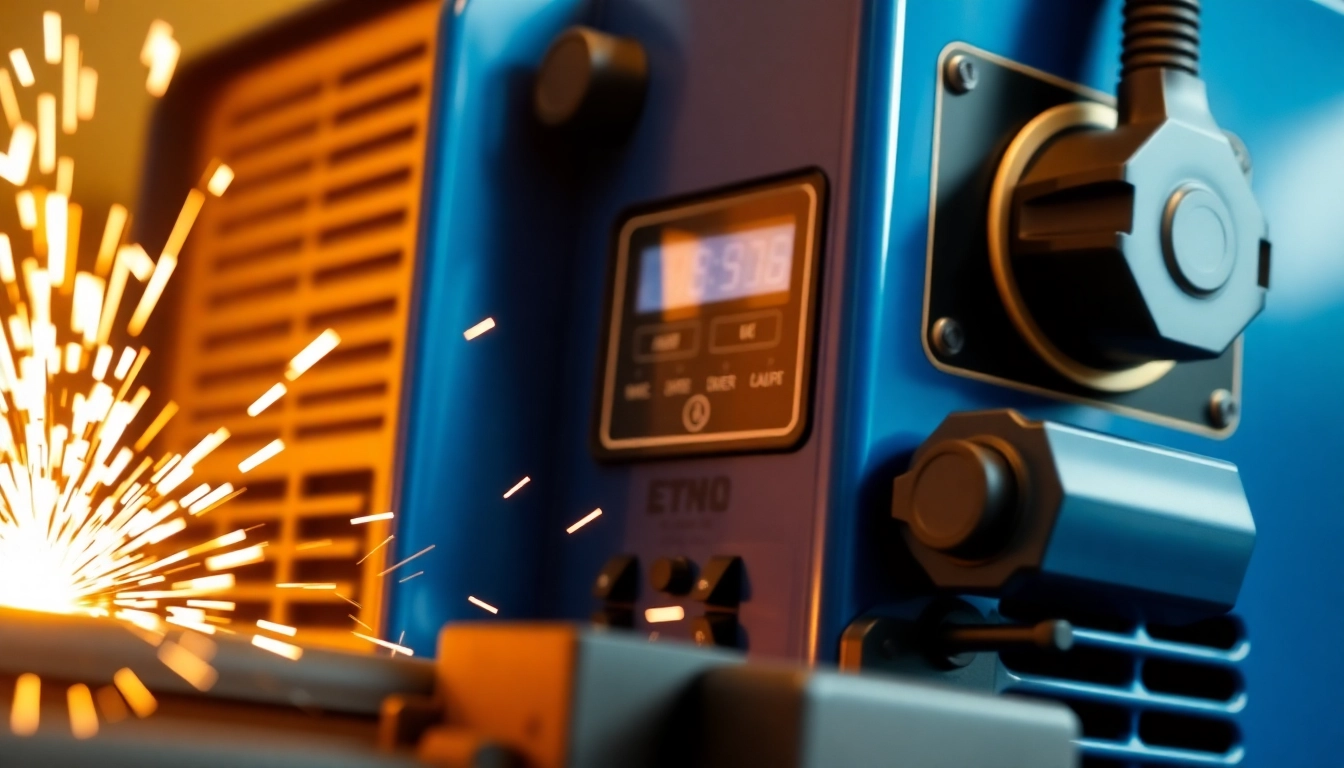Understanding the AC DC TIG Welder
What is an AC DC TIG Welder?
An AC DC TIG welder is a versatile welding machine that combines the functionalities of both alternating current (AC) and direct current (DC), allowing users to work with a variety of metals and techniques. The acronym TIG stands for Tungsten Inert Gas welding, a process that utilizes a non-consumable tungsten electrode to produce high-quality, precise welds. The ability to switch between AC and DC expands the applicability of the welder, making it suitable for welding materials like aluminum, stainless steel, and carbon steel.
In simple terms, an ac dc tig welder provides a robust solution for both hobbyists and professionals, catering to various welding requirements, from light fabrication to heavy-duty projects.
Benefits of Using an AC DC TIG Welder
The advantages of utilizing an AC DC TIG welder are numerous:
- Versatility: The option to use both AC and DC currents allows for a wider range of material compatibility. AC is ideal for aluminum and magnesium, while DC suffices for ferrous metals.
- Precision Welding: The TIG welding process offers enhanced control, enabling clean and precise welds even on thin materials.
- Clean Welds: The use of an inert gas protects the weld pool from oxidation, resulting in cleaner welds with less contamination.
- Less Spatter: Unlike MIG welding, TIG produces minimal spatter, making post-weld cleanup easier.
- Cost-Effectiveness: With their efficiency, AC DC TIG welders provide a cost-effective solution in the long run due to reduced waste and rework needs.
Key Features to Look For
When purchasing an AC DC TIG welder, certain features can significantly impact your welding experience:
- Amperage Range: Look for models offering a broad amperage range, typically between 10 and 250 amps, to handle various welding thicknesses.
- Duty Cycle: The duty cycle indicates how long the welder can operate continuously before needing a cooldown period. A higher duty cycle is preferred for prolonged welding tasks.
- Control Features: Advanced controls and settings allow for adjustments that enhance welding quality. Look for features like high-frequency start and pulse control.
- Portability: If you need mobility, consider lightweight models or those with wheels for easier transportation.
- Included Accessories: Check for a comprehensive package including hoses, regulators, and torches to avoid additional costs.
Comparing AC vs. DC TIG Welding
When to Use AC vs. DC
Understanding when to use AC versus DC is crucial for achieving optimal results. Here’s a breakdown:
- AC (Alternating Current): Best for welding aluminum and magnesium. The alternating current allows for a “cleaning” effect on base metals, removing oxides and impurities. A typical scenario would be in automotive or aerospace applications where aluminum is prevalent.
- DC (Direct Current): Suitable for steel and other ferrous metals. DC provides a stable arc and is less prone to issues like arc blow and is generally used for more critical weld joints.
Advantages of Each Current Type
Each type of current provides distinct advantages:
- AC Advantages:
- Greater cleaning effect, especially on aluminum surfaces.
- Eliminates surface impurities while welding.
- Better for overhead and vertical welding of aluminum.
- DC Advantages:
- Longer electrode life and stability of the arc.
- Better penetration for thicker materials.
- Simpler operation for beginners since it maintains a steady arc.
Common Applications for AC DC TIG Welding
AC DC TIG welders find applications across various industries, including:
- Aerospace: Employed for high-strength aluminum and composite materials.
- Automotive: Used for chassis fabrication and repairs, particularly with aluminum.
- Manufacturing: Precision fabrication for small components and assemblies.
- Art and Sculpture: Artists use TIG welders for creating intricate metalworks.
Top AC DC TIG Welder Recommendations
Best Budget AC DC TIG Welders
When looking for cost-effective options, here are some recommendations:
- Weldpro 200 Amp Inverter AC DC TIG Welder: A compact machine great for hobbyists, featuring a user-friendly interface and dual voltage capability.
- Everlast PowerTIG 200DV: An affordable option that doesn’t compromise on performance, equipped with advanced functions for better control.
Mid-Range Options for Enthusiasts
If you’re looking to invest a bit more for enhanced features:
- PrimeWeld TIG225X: Offers a great balance of power, features, and affordability perfect for small businesses.
- Hobart 500559 Handler 210 MVP: Known for its versatility and ease of use, allowing for quick adjustments between MIG and TIG welding.
High-End Welders for Professionals
For those who require the best performance:
- Miller Dynasty 210 DX: A top-of-the-line model renowned for its reliability and advanced features, suitable for complex welding applications.
- Linde L-TIG 220: Advanced AC DC welder that excels in precision welding with a strong focus on ease of use.
Welding Techniques for AC DC TIG Welders
Setup and Safety Precautions
Before starting any welding project, it’s important to ensure proper setup and safety. Here are some key considerations:
- Workspace: Ensure your workspace is clean and organized, free from flammable materials.
- Personal Protective Equipment: Always wear appropriate PPE such as gloves, helmets, and protective clothing to guard against fumes and UV radiation.
- Equipment Check: Inspect all equipment including hoses, regulators, and cables for wear and damage prior to use.
Essential Welding Techniques
Implementing correct techniques can significantly influence the quality of your welds:
- Control the Heat: Always adjust the amperage to suit the thickness of the material – too much heat can lead to burn-through.
- Maintain Proper Distance: Keep the tungsten electrode at the right distance from the workpiece to ensure a stable arc.
- Movement Speed: Practice a steady hand and consistent movement speed to achieve even bead width.
- Use of Filler Rod: Add the filler rod at the right moment during welding to create a stronger joint without excessive buildup.
Maintenance Tips for Longevity
Taking care of your welder will ensure longevity and consistent performance:
- Regular Cleaning: Keep the welder clean from dust and debris that might affect its operation.
- Inspect Consumables: Frequently check and replace worn-out consumables like the tungsten tip and torch body.
- Storage: Store the welder in a dry area to prevent moisture-induced rusting or electrical issues.
FAQs About AC DC TIG Welders
Is AC or DC better for TIG welding?
The suitability of AC or DC depends on the material being welded. AC is recommended for aluminum due to its cleaning action, while DC is preferred for steel and other ferrous metals because of its ability to create a more stable arc.
Can an AC DC TIG welder weld aluminum?
Yes, an AC DC TIG welder is highly effective for welding aluminum. The AC current removes oxidation and impurities from the surface, making for cleaner welds.
How to troubleshoot common issues?
Common issues can include unstable arcs and poor penetration. Troubleshooting often involves checking your settings, ensuring correct amperage, monitoring the cleanliness of the materials, and inspecting the condition of the tungsten electrode. Adjusting your technique and re-evaluating your work setup can also significantly mitigate issues.



